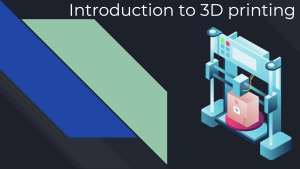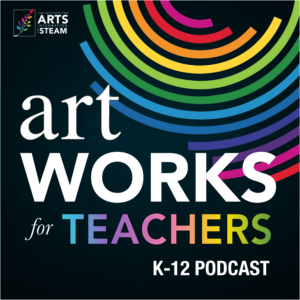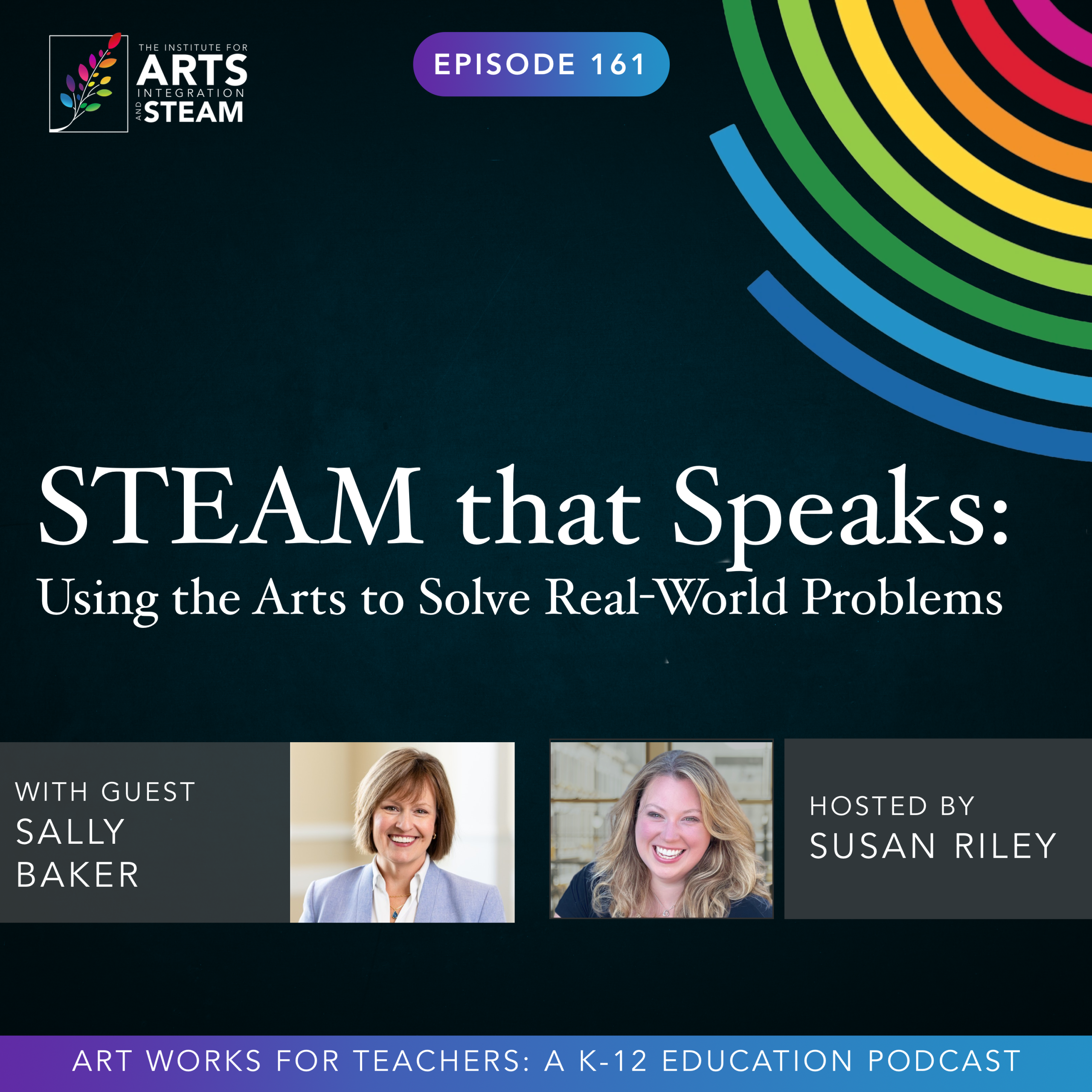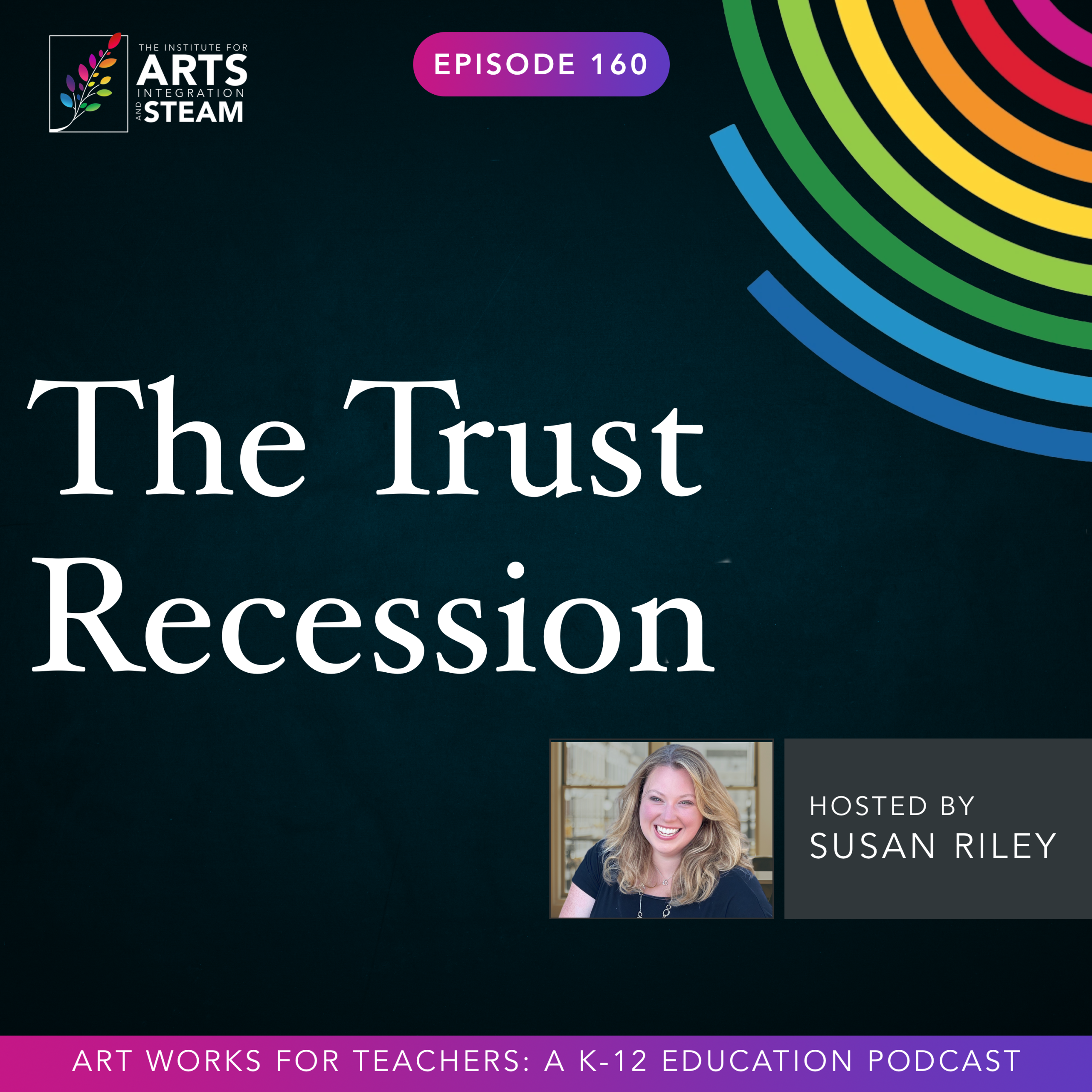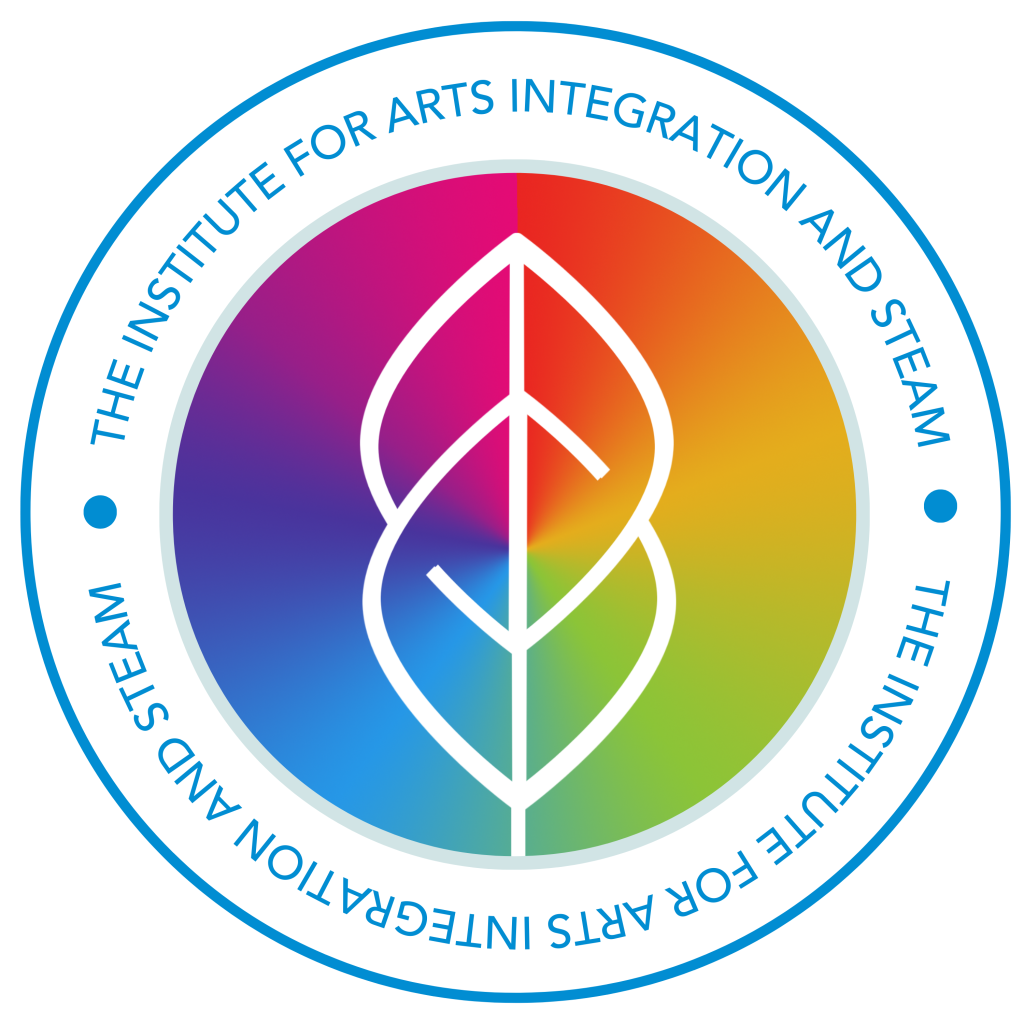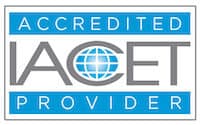ART WORKS FOR TEACHERS PODCAST | EPISODE 129 | 40:44 MIN
Why Not? Making Space for Makerspaces
Enjoy this free Introduction to 3D Printing tutorial from Jesus Huerta.
Hi there, Jesus. Thank you so much for joining us today. Absolutely. So let's start by just telling us a little bit about yourself and your journey into education so far.
Jesus
Thank you for having me. So my name is Jesus Huerta. I'm an educational technology coach in Calexico, California. If you've never heard of it, that's not a surprise. You've probably heard of our neighbors to the east. Wait, no, west. San Diego. We're an hour and a half east of San Diego out in the desert. So Calexico is a border town. So I was born in San Jose up near San Francisco, but I've lived here since I was like six months old. And it's funny.
I've been teaching for 11 years, but it took me a while to get back into education. I had studied that at first and then joined the workforce, then had a family and I was like, okay, I something better. And so then I ended up being a teacher and just my second year teaching, they sent me to a mini Q conference here in our area. And I met an educator that just got me to think about teaching differently. And that's why I teach how I teach because of him. His name is Ascension Reyes.
Awesome day.
Susan
I love that. I love that that's how we find our passion, right? Is through other teachers who have that same passion and kind of share the spark with each of us. So I know that in your role as an ed tech coach and you work with lot of integration of technology, talk to me a little bit about that. How did you find that aspect that that's what you wanted to really focus in on and what does that look like for you?
Jesus
So I've always been fascinated with tech even as little kid. We grew up pretty poor. So my first exposure to a computer was a Commodore 64. I'm showing my age with naming that. People in their 20s are like, what's that? They're looking it up and laughing. They're laughing right now. But not to make people cry, but I mean, we're…
Susan
here for it because I remember the Tandy 3000. That was mine. Yeah. Yeah.
Jesus
Okay, see, you're talking my talk right there, you know? But I wanted a Nintendo and we couldn't afford it, so my mom came home with that and she saw we'll use as cartridges, it's something. And so I've always been interested in tech. And so when I started teaching, I mean, I was very like, okay, buy the book, teach the first year. And I wasn't that happy. And then, like I said, I met this guy and he was showing robotics, Furos, physical computing, programming with, he had Arduinos and then he had 3D printing. And I'm like, I'm really interested in this stuff. Let me look at it. And I, and I told him during the 3D print one, that was already the second session. go, Hey, I go so I'm negative. I go, Hey, this is for like high school, right? Like a ZTE course. He's like, what do you teach? go fifth grade. Why not? That little phrase I always was like, why not? Why not?
So everything I do now is, why not? And so when a teacher's like, hey, I wanna do this, okay, why not? So I have a second grade teacher here that he does 3D design with Tinkercad, with second graders. And I have a first grade teacher that's waiting for me to be able to make time, because I'm the only tech coach right now in my district and there's, we're K-12. So there are seven elementaries, two junior highs, a ninth grade campus, because we're so big, and then our high school, and then our continuation, which also has a community school inside. So, yeah, and so in my role, I'm always like, okay, how can I get them to use this tool, even when it's not necessarily seen as an educational technology tool or ed tech tool? I'm always like, okay, why not? And so, because he said, why not to me, like, it could be done. I always say, yeah, we could do it. And so I just… I always push myself to try.
Susan
Yeah. So from that moment when he said, why not? And you just kind of rolled with it. How did that come about in your classroom? So did you just start using technology in your classroom at that point? And how did you go from that to becoming a tech coach?
Jesus
So right away I was like, okay, I had just started using Twitter back then. this is, let me see, my 11th year. So we're talking like 2014 around there. And so I got on DonorsChoose, got my first 3D printer. I thought it was like a $3,000 machine back then. I was like, oh, it's gonna take forever. I was already thinking, how can I campaign here in my area?
And Kia Motors came in and just boom, one shot paid for it. I almost threw it in the trash because it took me six months just to figure out this is how smart us teachers are sometimes. I'm saying this sarcastically because instead of calling that guy that I saw presenting 3D printing, I'll just figure it out on my own. And so he said, why didn't you call me? like, I don't know. Just I didn't think about it. you know. And so I just kept using more and more tech.
Donors choose, I'd go to like eBay, yard sales. If I saw something, I'm like, oh, they have Kinects? Hey, how much do you want for this? Or one time I was in Riverside and I would go through Craigslist, which is sketchy as it is. And I made like a deal at the parking lot with this guy. had gone to a closing Toys R Us and he bought all these Spheros.
He goes, I thought people would want them. He goes, and I can't get rid of them. He goes, and he goes, so you're a teacher? go, yeah. And I was only going to buy a couple. He heard my story about why I wanted them. So he goes, give me like 150 bucks and give you all 40 of these. I'm like, okay, why not? So I was always doing that. And then I, this is my third district here. The other two districts I was at, I think I was in a good fit because of how I taught. It's different, it's mainly project-based learning.
And so here, after a couple of years, opened us up. Well, there was two coaches here before. My partner left to a job at the county and so it's just me right now. But when it opened up, I applied and so I ended up being a coach. And I'm very happy in this role right now because the seven elementary we have, I helped pick out and kind of organize the maker spaces. So each site has a maker space right now. The hard part is how do we train seven elementary schools worth of teachers to use all that stuff. And so I tell them, don't walk in and get over one because we're gonna, as a teacher, we're gonna say, I have to know all this. No, pick the one that as soon as you walk in, you're like, that's it right there. I wanna use the cricket or I wanna use a laser cutter or I heard we have drones. I've always wondered what that is. So I tell them like, focus on that. This is a multi-year thing. Don't think you have to learn it right away. Get that out of your head. Cause when it's teachers, that's the first thing we think.
And so yeah, that's how I ended up in this position and this is my second year here. And so I love it because I still connect with students. go do basically like demo lessons. I do trainings with teachers. And so I go to sites and I'm walking down the aisle and I hear, hey Mr. Huerta, hey, are you coming to my class? No, I'm sorry. And then they get all disappointed and so, yeah.
Susan
Well, and I love how like the story is so resourceful, right? Like we're MacGyvers as educators. We, you know, it goes back to why didn't you ask? Because we were so used to, you know, putting everything together with duct tape and glue and, you know, and you're so resourceful at getting things. And I think that's one of the first things that I hear teachers and administrators say when it comes to creating makerspaces is we don't have the funding. We don't have the money.
And your story is proof that you don't need to. You can find other avenues. I mean, you gotta have a little money, but you can find other avenues and just be a little resourceful in order to fill those things. I'm curious in your role now, what are some of the other barriers that you see for people who are nervous about using makerspaces or taking that leap?
Jesus
I think our biggest barrier right now, and I'm going to say not just here, I think in general, after COVID, I think there was the hope, you know, and maybe even the expectation that, you know what, people are going to jump into, know, forget our code. Hey, remember they used to do our code. Yeah, why didn't we do this all the time? And, you know, I have two 3D printers in my classroom.
And instead that didn't happen. I mean, look, I don't want to sound rude, but I remember talking to somebody before COVID and they're like, I'm techie. And I'm like, okay. And I, I look, I understand. I know that I'm a tech coach and my, my job is to know all this tech. But when they said, it's cause I use Google classroom and I kind of stopped in my tracks and I'm like, look, I go, don't want to be mean, but that's like baseline.
That's not even, I wouldn't even brag. That's like going, I know how to cook. What? Look at this bowl of cereal right here. Like, okay. I'm impressed. I guess. I mean, it's not to sound rude. And so I think being able to use like Google classroom. Okay. Every teacher should know that now coming into the profession, because if not, you're in the dark ages, like for sure. Cause I mean, sorry. That's, that's, and it's not even cause it's, I'm being lazy. It's just, you're more effective. And I think sometimes teachers see tools and go, I'm not going to use that. You're not being lazy. You're working smarter. And the way I try to motivate teachers to jump in trying either like a project or use this as an activity or a tool. And that's where I think that the hesitation is. And I think that's the problem that we have teachers that are like, I don't know how to get started. I think what part of it is what I said earlier, that they're afraid to jump in and they don't have time. And so my job is, how can I find the tool that, you know what, it makes this thing like, okay, how can we 3D print this without, know, all right, get ready to split the atom guys, because it's so hard to learn. It is, it's really hard to balance the build plate. The printers we use, and it's gonna sound like I'm selling them, I always feel like it when I talk about them, but the equipment that we have is teacher friendly. The bamboo line of printers that we use.
Really the hard is, what did you design? You know, I made this case for my AirPods. Okay, send it to the printer. give me a warning. I forgot to add supports. Or it says that it gets, there's something wrong with the model. Okay. Really it's, send it and it just goes. There's this much like learning curve now. It went from being way up here to down here. And I think it's really important for teachers to jump in now, even, even though they're still learning curve because the big complaint is kids are bored or, and or they misbehave. Well, guess what? The misbehavior comes from their bored or they're confused. So they're like, you know what? I'm not just going to sit here confused. I'm going to try to get out of it by, hopefully they can send me to the office and I'm just going to at least sit there and daydream. Or again, they're bored and we're talking even high level students because if they're not challenged, they're like, okay, I'm going to act out.
And it's like, I never expected that person to act out. Well, yeah, they've been bored for like a month now. So what I tell teachers is, look, you can get chicken breast, chicken thigh, boil it up, and hey, you're getting the protein you're eating. Or I can take it, let me throw a little seasoning here, like, you know what, let me use chachi piti to, you know what, how can I make this lesson better? I'm teaching angles.
What do I have access to? This. Okay, you know what? Let me add a dash to this or that. Let me add, you know, spherules. guess what? On a piece of paper, a student's not going to really make that connection to angles. Because they're like, so something that goes on a piece of paper like this, no. Oh, that's an angle, the rotation of something. Oh, I've heard, okay. They start to use those terms naturally. And so I think the biggest thing is teachers don't know what they don't know.
So they don't realize that these tools are a lot easier now. There's a lot of now. If they're in Kinder, we got Indies, for example, robots. If we were talking high school, we have M-bots where they build them. So I think that's part of it. And also they need to be patient with themselves and understand it's not going to be a month long thing that, all right, you mastered it. It's going to take you a couple of years. And that's OK. The kids are happy with you falling on your face because they're like, hey, at least you're trying something different.
Susan
That's true and I think there's so much to unpack in what you just shared because I think one, the idea that it's okay for us to fail and fail forward and fail in front of the kids because we're all learning together. Two, the technology makes it relevant and if we're being really honest about why kids are bored, why they're showing apathy, why they're not showing up to school, it's because they're not finding that what we're teaching is relevant to what they want to do moving forward. mean if they want to be an influencer on YouTube tomorrow, well… the learning algebra for them is not relevant, right? We have to learn how to make it relevant in order for them to be excited about their future. And I think technology is a clear way to do that. And what you've modeled is that it's not just about the tools, that yes, we do need to know Google Classroom at a bare minimum, but also knowing what tools exist and how to use them. And I think that is such a key, particularly when we're talking about STEAM and what we're trying to do with connecting creativity, innovation with these STEM tools. One of my frustrations has always been, especially when we're talking about STEM and STEAM, is that schools will go out and buy all these tools and then give them to teachers and say, here, use them, but provide no PD in terms of how and how it connects to your curriculum.
So can you talk to me a little bit about how you do that with teachers? How do you show them not only how to use the tool, but how to implement this into their curriculum so it's not one more thing they have to do, but it's a natural part of how they teach.
Jesus
And so real quick, right now you mentioned, you know, vendors. I feel like sometimes, and just not, I'm trying to get on my soapbox, but I feel like sometimes we will go to vendors cause it's like, okay, I just, I need to check this box. I need this stuff, but I'm sorry. Most vendors that I've seen till maybe a couple months ago and the bamboo printers have been out for two years. Most of them were only selling the Dremels and I'm sorry, Dremels, super-fair 3D printer. And so I would say just a quick little plug. I'm not saying reach out to me, reach out to teachers that you're like, I heard this person is techie. Okay, go pick their brain and listen to them because guess what? You got 10 grand, you're gonna get five 3D printers from a vendor that they recommend that are okay printers or actually they're just gonna frustrate your teachers. But with 10 grand guess what, I can help 30 teachers. They can all have a 3D printer in their classroom. Because the ones that I recommend are about 350 bucks. And they run circles around those $2,000 ones. So just a quick plug. So I think your question was, how do I get teachers to use that tool to teach? So, and that's where I, my trick is this. I tell teachers, look, we gotta trick kids into learning.
Because if you go and say, look, a 3D printer. Now learn algebra with it. they're going to roll their eyes and go, is, But if we tell them, hey, look at this cool thing. Look, hey, you made a key chain. Hey, you know what? Let's make another key chain. But it's going to be for somebody you respect. And I want you to think about that person. Now I'm going to give you the option of, OK, either you can write about the person first or start designing it. But when I hit my timer at seven minutes, you're going to switch the job that you're doing.
And so here's some prompts and some sentence starters for my ELs that needs support. For them, you need me to do this right? Yeah, yeah. guy, okay, oh yeah, it's for my cousin that he's in the military or he started his own business at 18 and now he has two restaurants or whatever it is. But they're like, let me get to the key chain part. so one way is I tell teachers, look them learning the tool, let them learn it first. Because once they have it in August, you have that in your tool belt the rest of the year. You're like, hey, you know what? This person didn't show up my guest speaker. Hey, quick, let me do a robotics quick activity with them off the top of my head because I've been using it. Now I can use it and think off the top of my head very quickly with it. And so I tell them, look, the hardest, not for the kids, it is the tool. I to use a drone.
But for us, it's let's add this component to it. And I told them, if you don't learn it also a little bit, you're not going to see it as the teaching tool that you could see it with your teacher vision. Again, Mr. Reyes said that, know, teachers have teacher vision. see stuff that nobody else sees it the same way. And I think the day of, you know what, just put that in front of the kids. They'll learn it. They're not going to be able to run an X1 3D printer or build an M-bot without a little bit of support. So we do have to learn it. And that's why I teachers, but you don't need to learn all this at the same time. So I always tell teachers, if you're like, man, they don't write enough, show them a tech tool and just have them reflect on it. That's it. Guess what? In my area, we have a lot of migrant families. So they follow the fruits and the vegetables. travel, they're traveling, they move a lot. But
The times that because okay, so if I had open house, I would have the kids share their tech stuff. They make three games a year. They do cardboard arcade. They make a board game and they make a video game. I would have parents come in filthy and that's okay because what my dad did, he worked in the fields and they would see the tech and go, please continue because there's money. I don't want them out there with me in the cold, in the rain and the heat. And so I tell teachers, it'll get your parents more involved.
It's just better all around. again, I tell them, what are you into? I have a coach that he loves Ozobots, loves it. He's so good with them now they asked him to do a webinar. I mean, I'm going to support him and he can say, no, because no, I didn't do nothing. just said, hey, here's a little robot for you. And he's like, I need to move on to 3D printing because he has one. I'm like, He's like, why? Well, because.
It's like he had spaghetti, you know, noodles, and he just keeps making more more amazing dishes. I'm like, why are you going to move on when you're opening this in a way that I've never seen? And they're like, wait a minute, what are you doing with this? And he has the data to back up what he's doing. I go, you're doing something with it. Don't stop. you're at the roulette table and you're not losing, man. Like you just keep going with it.
And here's my example for other teachers. If you're like, Legos, I keep coming up with these great Lego. OK, so who told you to move on? Just keep going for it. Yeah. Now, when you're like, I'm kind of bored with Legos. OK, now move on to something else because the kids are going to see you're bored too. So.
Susan
Yeah, yeah. No, and I think that's an important point is that start with where you're comfortable. Start small and build from there. I do have a question about makerspaces. And we get this question all the time in terms of what should we put in them and how should we build them out? My question to you is not necessarily how you should build them out, but should you have a dedicated makerspace or should you work to having tech tools in each classroom that can then be used in various lessons at any time or both? What do think?
Jesus
So I'm gonna just let everybody steal my idea if I was a principal. I would use either my tech background or I would say, who's techie here? All right, or in the district. All right, great. What tool should I have in kinder? First, second, so it scales up. So when they go to seventh and eighth grade, they're like, I don't know what elective to pick. Cause I loved working with hand tools. Should I take the wood shop in junior high or should I wait till high school? I'm in high school now.
And Kda6, I saw these cool things. Oh, I used a Glowforge or an X, sorry, XOR, I think is better. But you know what? A plasma cutter. Oh, the software's the same? Oh, it's just like a super laser cutter. Okay. That's what I would do. I think the makerspace as a destination should still exist, but I think every classroom in itself should be a makerspace. Mine, I'm gonna share something that I did that I'm very proud of.
And it's not to I'm gonna use little kids slang. I'm not to flex on everybody, but I'm very proud of it now Could I fall on my face? I did and it's on video. So I'll see if I can find somewhere so 2019 fall 2019 I'm here in Calexico and I'm doing a lot of stuff with tech. I have a couple three pairs of my own in my classroom and My principal and the director after school enrichment. They're like, hey, let's do a steam club
And I go, And I go, I have an idea though. And they're like, okay. And the director seemed to say, well, how much is this going to cost? I'm like, well, this much or whatever. And so I said, look, let's invite kids from other classes. Cause my kids are going to see this stuff all the time. So my class was all mad at me because they're like, how come we can't join after school? like, well, you see it all day. So it's all right. Don't worry. So then I'm like, you know what, it'd be cool if we had more 3D printers. I said, look, we have this brand called Creality, have the kit printers that you build. said, I go, what if I told you we could be one-to-one with 3D printers for less than $10,000? Let's do it. So we bought 33 3D printers. I'm like, great. I'm gonna get here, my kids are gonna build it. We bought racks, COVID happens. So they stay home. And I'm like, great. So I meet up with the director over the summer and I'm…
You know, we had, I had lent her some equipment. She had lent me some and we're just chit chatting. And she's like, I'm so disappointed. Those printers are at home. I mean, at the warehouse, they're just getting sent in for two years, which was correct. And so I said, look, let's, let's do something. go, I have an idea for you. She was like, how much? And I said, you already paid for it. I said, let's have the kids. Cause my students in fifth, I followed them into sixth grade out. That was already the plan, which was a great plan because COVID happened. So I told her, look let's have them pick them up and I'll teach them how to build a video zoom at home. And she's like, have you ever done it? And I said, no, but I'm like, I'm sure I can do it. I was the first day I was like, what was I thinking? my God. These kids are like, what's an L wrench? I'm like that tool right there. They're like the seven. I'm like, put it upside down, turn it out. And I'm like, okay, what's a flat head screwdriver? I'm like these kids have never held tools. I'm like, this is great. It's funny and a little frustrating at same time. And so that right there would, my class was going to be like a super makerspace in itself, but I always treated my class as it has to be a makerspace because not because there wasn't one at the site. I would still have all that stuff anyways, but I think as long as there's tools that allow teachers to be creative in how they teach.
It doesn't have to be a 3D printer. It does not have to be a laser cutter. You could have a… So there's laser-sensoring 3D printing. It looks like dust and a laser hits it and you excavate it of like a fall. It's amazing. It's like a $100,000 machine. Who cares if you have it if you don't know how to use it or how to teach with it?
So yeah, so for me, it's having those tools and a variety of tools, if you can, for those teachers, just like you would have for students. You're gonna have some that need something easy to start with and then you need some, like me, that would be like, all right, where's the thing that shoots a laser into space and this comes out and I gotta see that thing.
Susan
Yeah, so I'm gonna pick your brain a little bit on that a little bit. Just what are some of the tools, and this is where you can plug whatever you want. What are some of the tools that you think that most schools should have at various levels? So elementary, middle, high. What would be tools that would be teacher-friendly, that would engage students, and that might be newer on the market that people don't necessarily know about, because everybody knows about Legos at this point, right? So what are some other tools that we should consider?
Jesus
So if you told me, I need a shopping list for say an elementary in makerspace, I would say get an electric cardboard cutter. there's one called WORX, W-O-R-X, because Cardboard Arcade is the easiest tool, our easiest material to work with. And kids ripping it, it doesn't look professional, but as the teacher, you can cut it. And I would say have teachers use that tool because it does have a blade and there's a guard but it's really just so you don't slip your hand in there. But I mean, somebody could stick your finger in there. I would say that tool is a must have, which is like a $20 tool, but that and a bunch of cardboard and you have a makerspace already. 3D printing, I would say get the bamboo line of 3D printers, just cause you know, the one that costs 1500 is like having three of other printers. It's so fast. Doing a key chain on like an Ender 3 hour and a half, does it in 30 minutes, 20 minutes sometimes.
An X tool laser cutter. It doesn't have to be top of the line, but these are the brands that I've seen that are easiest to use Anything that's like a hand resource they can build like Lego. Okay get connects get magnet tiles get a keva planks They look like Jenga blocks Tinker toys the old school like the bucket. I used to play with that all the time Lincoln logs anything like that If you can get drones get drones
If you can get like where they build the drum even better and that could be say for sixth grade But I would say like for robotics get the indies get also bus for the little ones For the older kids get them spheros and if you can find all these the super fast sphero brand the one that looks like a little log Anything like that but also get art resources
I know people say STEM, but I'm a big believer in STEAM and I have a friend, Valerie Perez, she puts an extra M, so I'm gonna plug her and borrow her acronym. It's science, technology, engineering, art, math, and music. Digital music. You can get, I think it's Aki is the brand, they have digital keyboards, my son has one. He does game design and he wants to just make the whole game on his own just started his college classes online. That's a great little $80 keyboard and it's a MIDI keyboard so you can connect it to a device and do digital music. Digital music tools, there's tons that are free. One's called Beep Box, B-E-E-P. And they just touch little squares or click on them and they learn the four layers of a song, which I didn't really think of it as a sandwich like that. And they have little layers and
Each layer, only certain instruments available. So you create the sound like a wall. And I was like, man, this is a great tool for kids to see the structure of a song. So I think anything like that. But I think my best advice, because you have your admin at the top. Yes, I know it's going to be frustrating if you have a teacher tell you buy from these 10 vendors, you know, instead of just one. But guess what? Right now I know.
I'm gonna say something that is terrible to hear, but I know every state throughout, they're having cuts that COVID money ended. And so we have to stretch our money and the best person to help you is going to be a teacher also for that. Especially when if they've bought stuff for their classroom, they're like, man, they stretch those dollars or they get, you know, I know some districts in some states, they'll say, hey, here's your $500 you get every year to buy whatever you want for your classroom. They've done that in the past.
Go ask those teachers. Guess what? That's a smart thing to do. You don't have to know everything. I still learn a lot, even though I have to be the tech guy. Sometimes I see somebody and they're like, you didn't know that? I'm like, no, I don't know that. mean, thank you. I'm gonna steal it and act like I did, but no.
Susan
Yeah, absolutely. Well, and it goes back to we're all learning together, right? And that's the whole point. Now, before we go, I have heard through the grapevine that you have passions for wood burning, carving and music. So tell me a little bit about how these artistic endeavors and I love that you talked about moving into STEAM because I think that's non-negotiable at this point headed into the 21st century, especially with AI. Talk to me about how your artistic passions have influenced
Your tech passion.
Jesus
So I've always loved doodling and drawing. it's funny, I used to just do little circles or little doodles on the side of my paper. And in third grade, I had a teacher tell me that it was okay. And that's something that changed how I learned also. Because I would always get in trouble because they thought I wasn't paying attention. And so mean, my son has ADHD. When he got diagnosed as an adult, I got diagnosed. And I'm like, okay, so that's why I would do some of the things that I do which I don't know if you notice on camera, my hands a lot. It's killing me when I don't do this thing right here. And so she said a math problem out loud. goes, this is what's, know, like eight times nine, 72. And I wasn't even looking, I was just like, but then I realized, oh, I didn't look up. didn't, this is what we teach students sometimes. In my head, I said, remember, I didn't look up to look at her. I'm gonna get in trouble. Instead of just saying, hey, well, he knew what he was doing.
He was doing something else. It doesn't matter. I got the answer I needed. I think sometimes we make it like, it's gotta be that. And so anyways, she came to me later. was, why do you do that? The little circles on the side. go, and I didn't know what to say. was super scared. She goes, it helps you think, huh? It was like somebody spoke my language for the first time. She put her hand on my shoulder. She goes, never stop doing that. She goes, find other ways. she goes, you learn better if you're not looking at
And she was right. I didn't need to look at her. I felt like I just needed to listen and do something else with my hands and my eyes. And so from there, I just kept drawing in class, but listening. I wasn't the best student in high school. was once I went off to college the second time. But I always wanted to keep drawing. And I think right now with AI, when I need to make presentations, yes, I'd love you doing that. But I still draw. I do.
One of my new ones is 3D modeling with Nomad on the iPad. I'll AI generate an image and then I use that to turn it into a 3D model. But for me, I've always felt like to keep your mind sharp, you have to learn new things. And if you're drawing or creating something, it's always something new. And so you have to think, well, how do I make it look like this? So you're doing instant problem solving. And I think that's something that's been lost.
And we were like, how come kids don't know anything critically? Because we ask them to draw and then they do, you know, a little happy face like that. Okay, well, you know, but if we took the time to teach them to draw or give them a chance to explore it, then, you know, we get something better. And I think that's where, you know, it's not that much better, but at least it's a little bit better, you know? And so when it came to tech, I was like, How can I do stuff like this? Because if I can combine art is always gonna be, yeah, know, that's a cool drawing or it's not my style, whatever, but there's always an emotion to it. And for the creator, there's even more. And if we can attach something to it for like the student, they're gonna go, because most people when they make arts, because they wanna send a message about how they're feeling about something they themselves, you know, loss, joy, happiness, people have written songs about when they fell in love and when they've had their heart broken. And so for me, when it's time to create something, what, okay, make a little key chain and then the kids figure out how to put a heart on it. Well, guess what? It has to be for somebody and you got to think about who they are and all that. And so I've always loved making things. I always wanted to be a game designer myself. And that's why I have a little bit of a background in game design. did a couple of years just studying like theory and how to do that.
And that's something that I also brought to the classroom. And I love apps like Bloxels because the kids have to draw the character, the background, animate it. I love animation. Love it. Because I think when a child or anybody makes something and you can show it and get feedback right then and there, most people are going to go, whoa, you made a game? You made this animation? You made this thing that was 3D printed? Guess what?
That kid that struggles with being in class, sitting still, doesn't speak well, whether it's they have a speech impediment, English not their first language, they're new to the country. But you can see somebody's reaction when they go, what? made that like, they're going to go, hey, I'm worth something because they're going to think they're not even though they are. And so I think my passion for that bled over into the classroom because just showing them basic art lessons. The kids were like, I mean, for my ego, it helped. They're like, oh, that's so cool. I'm like, great, I'm a good artist now. But I wanted them to be even better because I wanted them to see, if you love this, this is a job. This is a career. And I always told students, if you find something where you're like, I am ready to do that every day, you found your passion and getting paid is just a bonus.
Susan
Amen to that. Amen to that. Absolutely. So thank you so much for spending your time with us today. I would love to know how can our audience get in contact with you if they want to connect further.
Jesus
So they can contact me via email. Let's teach 1979 at Gmail. You know how old I am again. I post a lot more now on Instagram. It's Mr. Huerta's class. It's the same for TikTok. I don't post as much on TikTok anymore. Mainly just Instagram, videos of what I'm doing in my class. I hardly ever post about myself. And… And I'm also on LinkedIn also. look up his work, you'll see my face right there. And really, yeah, that's it.
Susan
Awesome. Great. We'll link to all of that in the show notes to make sure that it's easy for people to find you. Thank you so much again today. I learned so much from you. I'm so sure that everybody in our listening audience will as well. Thank you.
Jesus
Awesome. Thank you.

